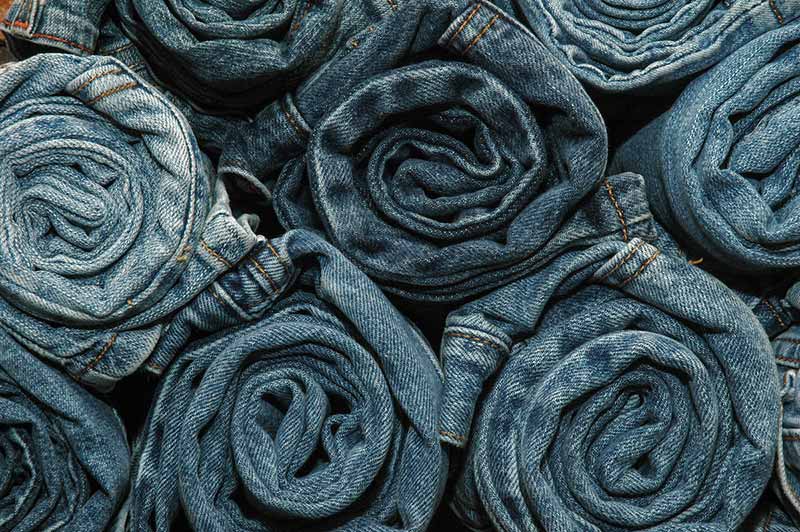How Is Denim Made?
After cotton fibers are harvested and spun into yarn, the yarns are dyed. The jeans are often indigo-dyed, making them the classic blue color for denim. Cotton denim is woven either on a shuttle loom or a projectile loom.
· A shuttle loom produces what's called selvedge denim. The weft thread is passed through the warp threads in a back and forth motion, with no breaks in the weft. This creates a very smooth and sturdy selvedge edge.
· A projectile loom produces non-selvedge denim because there is a single weft thread for every row and not one thread woven throughout. This creates a more delicate edge that needs to be sewn to keep from fraying.
6 Different Types of Denim
1. Indigo denim: Indigo denim is achieved by dying the warp threads with indigo dye and white threads are used as the weft. As a result, most blue jeans are blue on the right side, as the fabric is warp facing, and the interior is lighter blue, almost white.
2. Stretch denim: Stretch denim weaves spandex or another elastic component to give the fabric some added give and flexibility. Stretch denim is often used for skinny jeans.
3. Crushed denim: This type of denim has been treated so that it has a wrinkled look.
4. Acid-wash denim: This denim is treated with chlorine and a pumice stone to create a marbled look.
5. Raw denim: Raw or dry denim is fabric is that is not washed after it is dyed. This creates a rougher and stiffer texture.
6. Sanforized denim: This is denim that is treated so that it doesn't shrink in the wash. This applies to almost all kinds of denim except for raw denim.
Learn more about fabrics at Kingsun Textile.

Previous: Texworld Paris Invitation
Next: Exhibition Invitatios